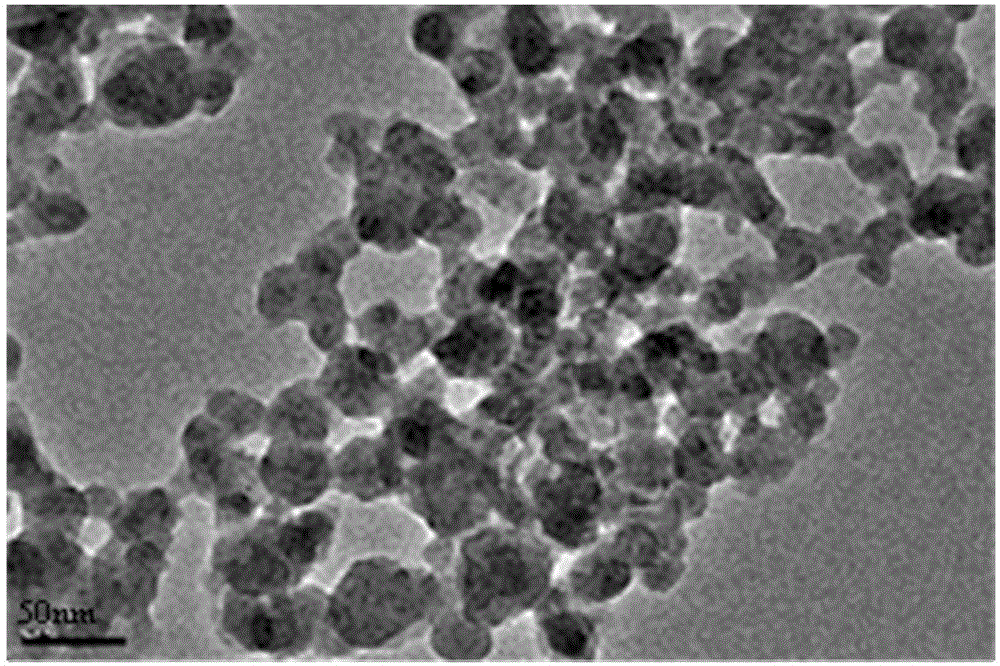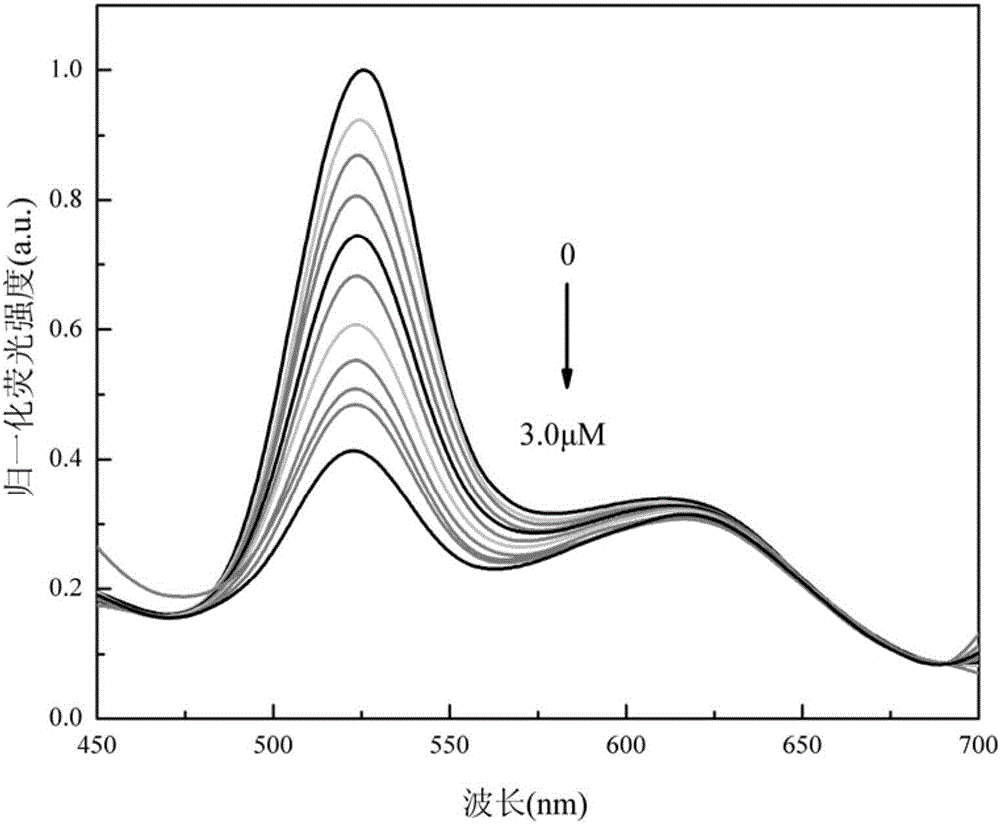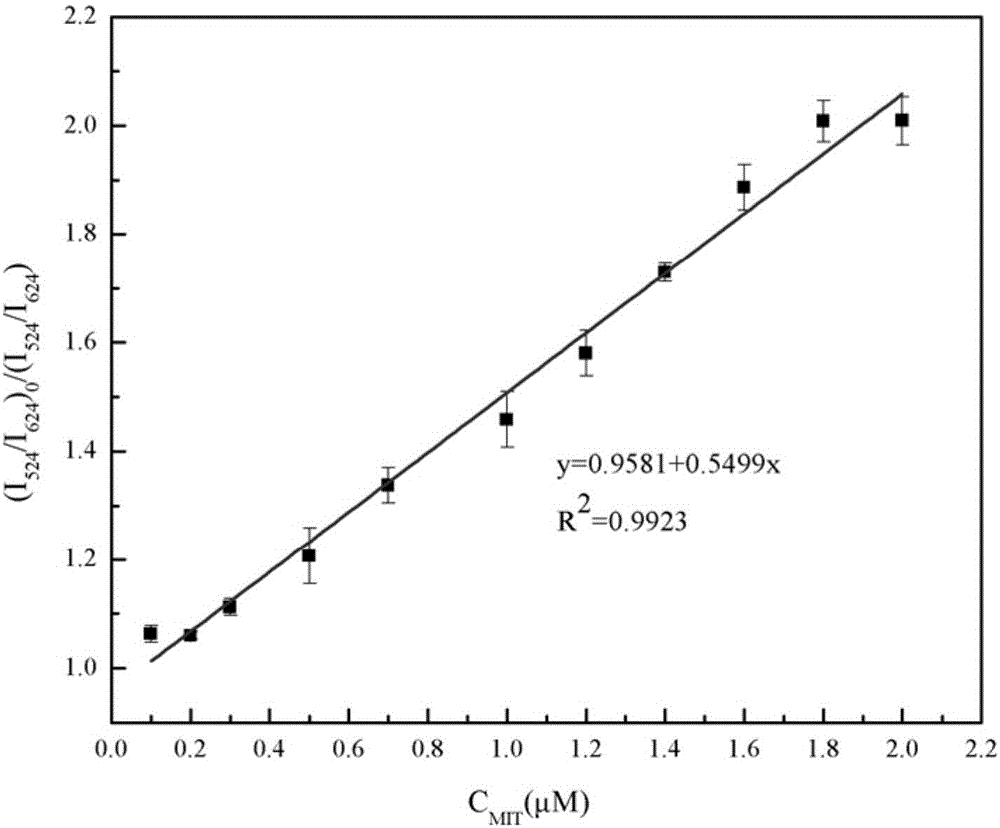Method for detecting mitoxantrone based on molecularly imprinted polymer with quantum dot ratio fluorescence performance
A technology of mitoxantrone and ratiometric fluorescence, which is applied in fluorescence/phosphorescence, material analysis through optical means, and measurement devices, can solve the problems of cumbersome operation and time-consuming, achieve high-sensitivity detection, improve analysis rate, and operate simple effect
- Summary
- Abstract
- Description
- Claims
- Application Information
AI Technical Summary
Problems solved by technology
Method used
Image
Examples
Embodiment 1
[0019] 1. Mix 1mL green CdTe quantum dots and 6mL red CdTe quantum dots@SiO 2 Add to 13mL morpholineethanesulfonic acid buffer solution with a pH value of 5.6, stir and mix evenly at room temperature, add 20 μL (80 μmol) 3-aminopropyltriethoxysilane and 10 mg (20 μmol) mitoxantrone, and stir at room temperature for 30 Minutes, then add 200 μL (240 μmol) ethyl orthosilicate, and stir at room temperature for 24 hours under the condition of avoiding light, and the product is successively washed with distilled water and dimethyl sulfoxide to remove unreacted 3-aminopropyltriethoxysilane , tetraethyl orthosilicate and template mitoxantrone, and then centrifuged with distilled water to remove dimethyl sulfoxide to obtain a molecularly imprinted polymer of mitoxantrone with ratio fluorescence properties (see figure 1 ).
[0020] 2. Disperse 1 mg of mitoxantrone molecularly imprinted polymer with ratiometric fluorescence properties in 20 mL of phosphate buffer with a pH value of 6.5,...
PUM
 Login to View More
Login to View More Abstract
Description
Claims
Application Information
 Login to View More
Login to View More - R&D
- Intellectual Property
- Life Sciences
- Materials
- Tech Scout
- Unparalleled Data Quality
- Higher Quality Content
- 60% Fewer Hallucinations
Browse by: Latest US Patents, China's latest patents, Technical Efficacy Thesaurus, Application Domain, Technology Topic, Popular Technical Reports.
© 2025 PatSnap. All rights reserved.Legal|Privacy policy|Modern Slavery Act Transparency Statement|Sitemap|About US| Contact US: help@patsnap.com



